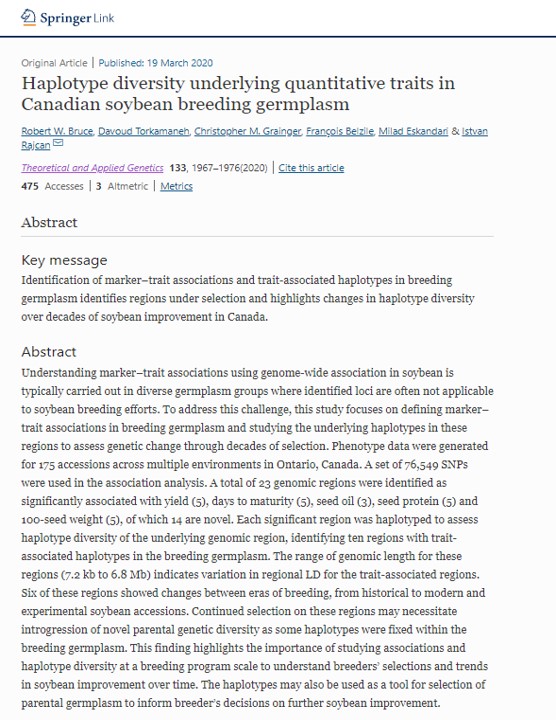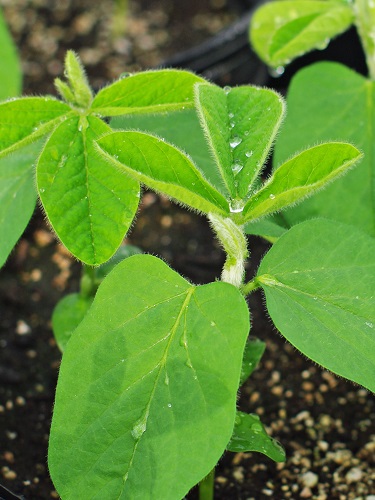Manuscripts

- Publication date : 2020-10-20
Reference
Bruce, R. W., Torkamaneh, D., Grainger, C. M., Belzile, F., Eskandari, M., Rajcan, I. 2020. Haplotype diversity underlying quantitative traits in Canadian soybean breeding germplasm. Theoretical and Applied Genetics.
Abstract
Key message
Identification of marker–trait associations and trait-associated haplotypes in breeding germplasm identifies regions under selection and highlights changes in haplotype diversity over decades of soybean improvement in Canada.
Abstract
Understanding marker–trait associations using genome-wide association in soybean is typically carried out in diverse germplasm groups where identified loci are often not applicable to soybean breeding efforts. To address this challenge, this study focuses on defining marker–trait associations in breeding germplasm and studying the underlying haplotypes in these regions to assess genetic change through decades of selection. Phenotype data were generated for 175 accessions across multiple environments in Ontario, Canada. A set of 76,549 SNPs were used in the association analysis. A total of 23 genomic regions were identified as significantly associated with yield (5), days to maturity (5), seed oil (3), seed protein (5) and 100-seed weight (5), of which 14 are novel. Each significant region was haplotyped to assess haplotype diversity of the underlying genomic region, identifying ten regions with trait-associated haplotypes in the breeding germplasm. The range of genomic length for these regions (7.2 kb to 6.8 Mb) indicates variation in regional LD for the trait-associated regions. Six of these regions showed changes between eras of breeding, from historical to modern and experimental soybean accessions. Continued selection on these regions may necessitate introgression of novel parental genetic diversity as some haplotypes were fixed within the breeding germplasm. This finding highlights the importance of studying associations and haplotype diversity at a breeding program scale to understand breeders’ selections and trends in soybean improvement over time. The haplotypes may also be used as a tool for selection of parental germplasm to inform breeder’s decisions on further soybean improvement.




